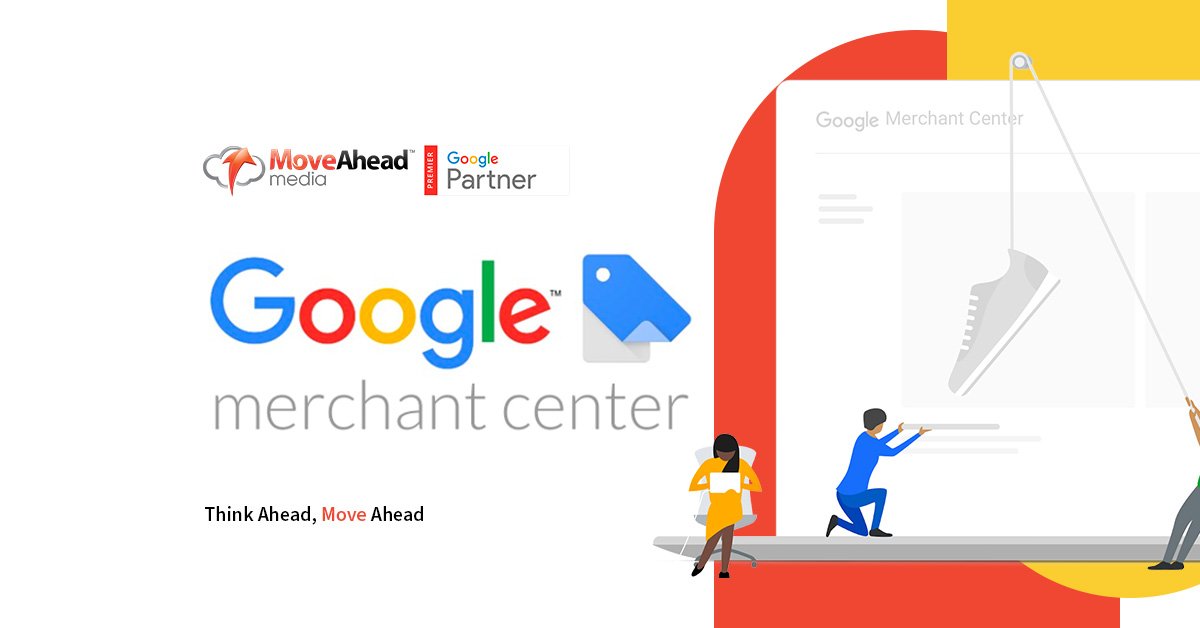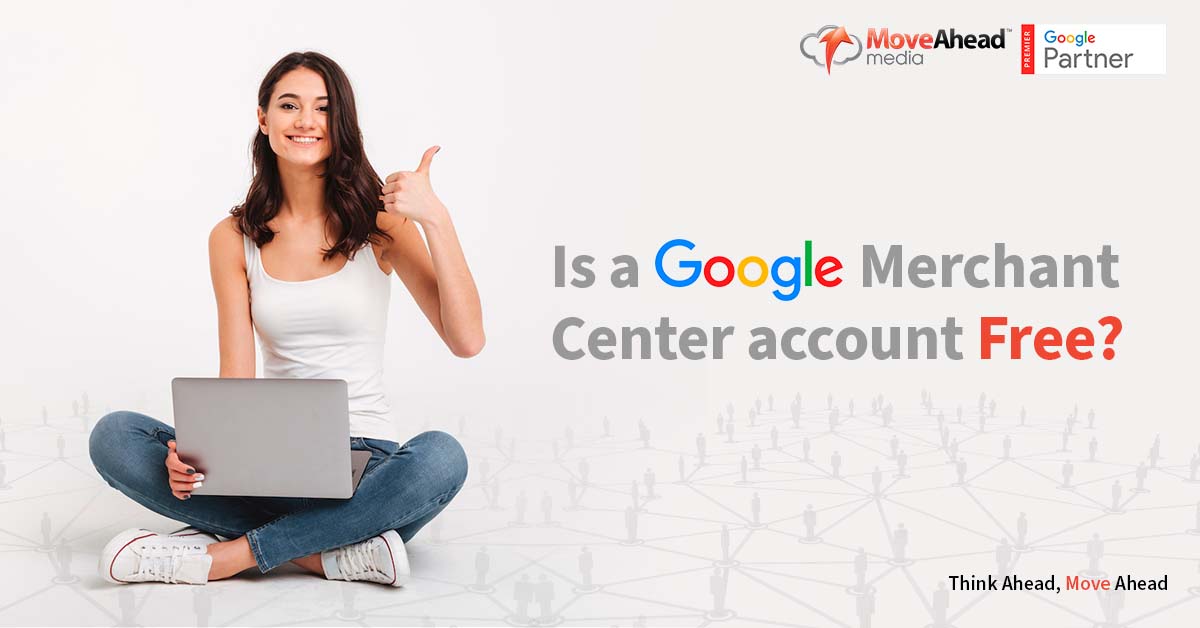
What is Google Merchant Center?
Contents
- 1 Is a Google Merchant Center account free?
- 2 Why should I use Google Merchant Center?
- 3 What you need to register with Google Merchant Center
- 4 Tips to optimize your use of Google Merchant Center account
- 5 Some takeaways about Google Shopping & Merchant Center
- 6 A few FAQ’s
- 7 Phew! That’s a lot of info… Ready to get started?
Google Merchant Center is a service offered by Google that allows you to upload your product feed, enabling potential customers to find specific products. With this blog post, we will explain what it is and how to get started.
Google Merchant Center allows you to upload your products and make them available on the world’s largest search engine. Once you have created an account, follow these steps:
1) Upload Your Products To Merchant Center – You can upload up to 25,000 items at once!
2) Create Product Feeds – There are 4 types of feeds, each serving a different purpose. The most popular feed is the Standard feed which includes all of your product data including pricing and availability.
3) Submit Your Feeds – After completing the two steps above, submit all of your feeds using one form for better efficiency in the Merchant Center!

Is a Google Merchant Center account free?
Google Merchant Center is free to set up and use. While advertisers may choose to utilize it exclusively for product listings on the Google Shopping tab, a GMC account’s primary purpose usually involves using paid advertisements with their products called “Google Shopping Ads.”
If you run these ads via your Google AdWords account, you will be charged by that platform.

Why should I use Google Merchant Center?
Google Merchant Center makes it easy to customize product data so that you can fine-tune your Shopping campaigns. For example, if one type of shoe isn’t performing well in the US market but is selling really well in Europe, then I could use a different attribute or descriptor for my ad campaign targeting European shoppers.
Google has made it easy to manage your eCommerce site’s advertising strategy by providing users with a simple interface that allows them to make changes without having technical knowledge about HTML coding. With Google Merchandise, editing products on the Shopping Feed is also quick and hassle-free!
Optimizing your marketing on Google is easier than ever with a store that’s fully integrated into the platform. You can easily run remarketing and omnichannel campaigns to target customers across channels like AdWords, YouTube, Shopping Actions (formerly known as Product Listing Ads), and Shopify-powered marketplaces such as Amazon. This means you don’t have to worry about the presentation of product information being inconsistent throughout different platforms because it will be synced up automatically in real-time through Google Merchant Center.
Your merchant center account is a one stop shop for all your product needs. You will find that it includes useful tools to help with advertising, as well as essential information needed in generating and serving out ads towards potential customers.
Google Shopping is one of the most popular types of shopping comparison websites. Without an account with Google, your products will not appear on this site and you cannot create Product Ads unless it has been added to their database which requires providing certain information about yourself – in other words: if GMC doesn’t have everything they need from us then we don’t get a chance at using those features!
Selling products directly to consumers? Google Merchant Center is the tool you need. A component that should be integral in your overall digital marketing strategy, it will give an edge for success with this new trend of online shopping from home or mobile devices.
If you want to get started with managing your Google Ads, there are a few important things that need to happen. The first step is setting up an account and then linking it in the Merchant Center so we can take advantage of all these great benefits!
Merchant Center loves lists.
- Google Shopping listings will help your business gain visibility because buyers searching Google for products can see all of your offerings in a catalogue-like format.
- Tie your Google Merchant products to specific AdWords ads in minutes. Remarketing techniques can also remind visitors of previously viewed products for increased conversions and sales rates.
- Remarketing techniques can be employed to remind visitors of previously viewed products. This allows advertisers to target their audience more efficiently and effectively in the Google Merchant Center. To get those shoppers to buy, dynamic remarketing ads pull from your Merchant Center feed and show them the products they’ve already viewed on your site. You can also add custom messaging that will help jog their memories and close more sales!
- Google Merchant Center also utilizes customer feedback to allow for better purchase decisions. When a customer purchases a product, they’ll have the option to leave feedback that can be viewed by other users alongside their “star rating.” Customers who buy and enjoy products with high ratings may prefer this platform over others.
- Buyers clicking the public listings can be taken directly to its store page on an eCommerce site.
- Google’s Local Search Integration is the perfect way to keep your customers local and make them happy. By using geographical tagging, you can direct their searches towards nearby stores which will increase sales by up-to 20 percent!

What you need to register with Google Merchant Center
Setting up the Google Merchant Center account can be a time-consuming process. It takes multiple steps to integrate into other Google ventures, but it is worth the trouble because of its many benefits. Here are the steps you need to complete:
- If you currently own at least one Google account but would like to set up another login specifically tailored towards Merchant Center instead of using one that is shared by other members within the same business team, keep on reading this blog!
- A Google verified website and business that requires adhering to several guidelines. This includes providing a valid physical address, contact number, technical support, and a secure checkout process that meets the merchant center standards.
- Full product data, including pricing and availability in the format that Google can accept. You should also provide TXT or XML files derived from Excel spreadsheets. In some cases, it is possible to import product data as well if you are already using an eCommerce platform on your website.
- This integration offered by the eCommerce platform allows the merchant center to sync all the data required.
Tips to optimize your use of Google Merchant Center account
Google Merchant Center can be an incredibly powerful tool for eCommerce merchants. But, it’s easy to get lost in the details and skip some of the lower hanging fruit that could make a big difference on your bottom line. You don’t have to do every single one! Just keep these tips in mind as you go through setting up Google Merchant Center so they are not forgotten along with all those other little tasks like adding images or shipping rates for example.

Extend your list of attributes
Google Sheets may have a set number of pre-set attributes, but you are not limited to them. Depending on the ads and what types of products/services they offer or promote; consider adding additional columns with useful information like age range size material etc…
You can even include some important product details in the titles themselves so potential customers will be able to see at a glance if it is relevant for their needs before clicking through.

Make it scalable
This might seem obvious, but arranging your sheets in a way that allows you to scale upwards without any trouble is more than worth the effort.
Keep in mind that one of the most important things you can do for your business when starting out is organizing and cleaning up any old files, especially those related to Google Merchant Center. This will make scaling product feed easier whenever necessary so that no mistakes are made during this process which could potentially put a halt in all future growth efforts!

Add GTINs liberally
If you don’t want to run into any errors in your Google Merchant Center account, GTINs must be included for all products listed. If a product doesn’t have an associated barcode or if the item is not available as normal goods (e.g., vintage items), include the brand and MPN fields from Google’s data specification guidelines instead of using a GTIN number.
Some takeaways about Google Shopping & Merchant Center
If you are an eCommerce store, your product or service must be on Google Shopping period. Why? According to the latest statistics from Moz, nearly 65% of all clicks on Google Ads come through shopping ads – including 89% of non-branded ad clicks!
Google Shopping Ads have transformed online retail search marketing in recent years. As an eCommerce store, you cannot avoid adding your products to these ads anymore.
Google Shopping shows your products and prices to online shoppers even before they land up on your website. It is a great way of generating ad clicks, which can increase sales for you.
Google Shopping allows you to drive customers directly from Google search ads. However, it does not allow the creation of marketing campaigns or a keyword strategy – which is where Google Merchant Center comes in and operates your product feed displaying shopping ads on Google.
A few FAQ’s
What is Google Merchant Center
Google Merchant Center is a digital platform that allows you to keep and regularly update information on all the products that you sell through Google Shopping. You can also use it to create ads for different platforms such as YouTube, which typically attract more traffic than regular advertisements.

What are some benefits of using Google Merchant Center?
Google Merchant Center is the bridge between your business and customers. It serves as a hub for e-commerce activities to bring you data, sales, enhanced features, and more! There are three major benefits to using Google Merchant Center:
1) You can import custom product sheets;
2) Edit these sheets on demand without having to contact another vendor or spend money creating new ones;
3) Integrate seamlessly with other products from Google like Analytics & AdWords campaigns.
The cost of an ad is determined by two different pricing structures: CPC (cost per click) and CPE (cost per engagement). With the former you are charged every time a user clicks on your advertisement, while with pure play esterats pitches like Facebook Ads Manager this can be lowered down to just 30 seconds worth of interaction.
The disadvantages of Google Merchant Center
Google Merchant Center’s one downside is that it requires you to meet some of Google Shopping’s technical specifications for your product listings. To send your products, you must prepare them in a specific format (XML, CSV, or TXT), which can be difficult and time-consuming if the process isn’t handled by someone with adequate skills.
Phew! That’s a lot of info… Ready to get started?
Hopefully, you’ve found all the necessary info you needed in this blog to get you going with Google Merchant Center and apply it to your Shopping Campaigns successfully. Google Merchant Center is a valuable tool for helping your customers find more information about products and search engines. It does this by adding high-quality product data to create an optimized user experience that provides the best results in different places throughout Google, including mobile searches and shopping platforms like those on Amazon or eBay.
Remember to make sure you optimize your use of it with quality data so consumers can easily learn useful info about what they’re searching for across all types of devices – from desktops to smartphones. So, sign up for your free Merchant Center account now and start on the road to increasing your Google Shopping revenue today!




